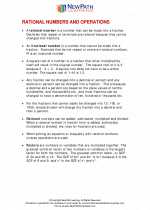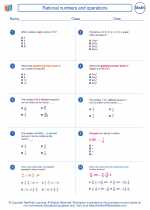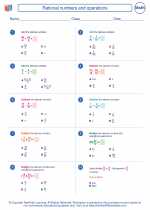Negative Exponent
A negative exponent indicates that the base should be divided by itself the number of times indicated by the exponent. In other words, it is the reciprocal of the base raised to the positive exponent. For example, if we have a number x raised to the power of -n, it is equal to 1 divided by x raised to the power of n.
For example, 3-2 is equal to 1 / 32 which is equal to 1 / 9.
Rules for Negative Exponents:
- When a number with a negative exponent is in the numerator, move it to the denominator and change the sign of the exponent to positive.
- When a number with a negative exponent is in the denominator, move it to the numerator and change the sign of the exponent to positive.
- Any number raised to the power of 0 is equal to 1, regardless of whether the number is positive or negative.
Examples:
If we have 4-3 in the numerator, it becomes 1 / 43 = 1 / 64.
If we have 5-2 in the denominator, it becomes 52 / 1 = 25.
Study Guide:
To master the concept of negative exponents, it is important to practice converting numbers with negative exponents to their equivalent positive exponent form. Also, practice simplifying expressions containing negative exponents using the rules mentioned above. Remember that a negative exponent indicates the reciprocal of the base raised to the positive exponent.
Here are some practice problems to help you understand negative exponents:
- Simplify the expression 2-4.
- Convert the expression 1 / 3-5 to an equivalent expression with a positive exponent.
- Calculate the value of 5-3 / 52.
- If x-2 = 1 / 16, what is the value of x?
By mastering the rules and practice problems, you will gain a strong understanding of negative exponents and be able to confidently solve problems involving them.
.◂Math Worksheets and Study Guides Eighth Grade. Rational numbers and operations

 Worksheet/Answer key
Worksheet/Answer key
 Worksheet/Answer key
Worksheet/Answer key
 Worksheet/Answer key
Worksheet/Answer key
